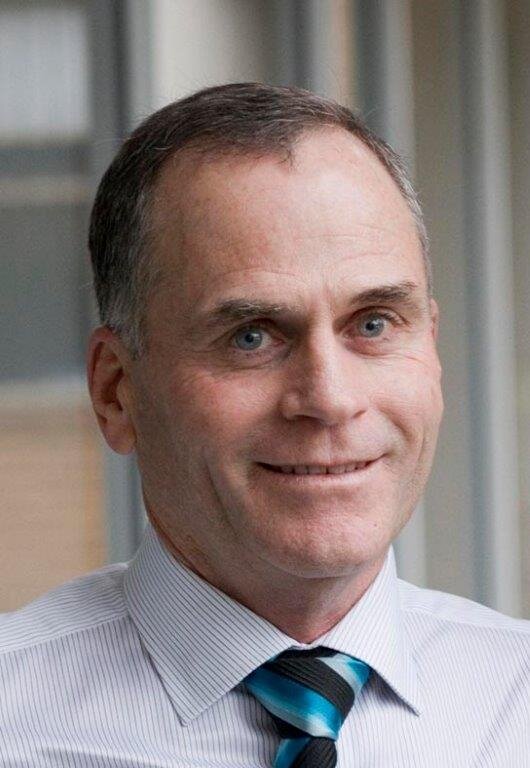F109 How digitally healthy is New Zealand? (Scott Arrol)
On 20th November, New Zealand, which has 4.9 million people, only had 50 reported COVID-19 cases in the whole country. The reason the country is successful in containing the virus better than most countries in the world, is the discipline of the people, says Scott Arrol, the former CEO of NZ Healthcare IT - an organization connecting insurers, healthcare providers, and the healthcare industry.
Did then technology contribute to the containment of COVID-19 infections? As many other countries, New Zealand did introduce a contact tracing app, which was downloaded by 2 million people. The way the app works is by scanning QR codes in the building one is entering. Because this is voluntary, many people don’t scan the codes. Scott Arrol believes though that the discipline of New Zealanders was the key factor for success. “Probably like most countries, we weren’t prepared at all. But our citizens and people in New Zealand got behind the need to isolate and break the transmission cycle as quickly as possible. From a cultural perspective, we have a high level of community awareness. We want to do the right thing for our fellow New Zealanders or Kiwis as we call ourselves. At the time when things were looking very bad for the whole world, our government said, we're going to have to take a hard and fast approach to contain the spread of the virus. A very small minority did not follow this. We went into lockdown. None of us were that happy about it. But we knew that that's what we had to do. I think in fact at the moment, most cases are in managed isolation. People who have come into the country have to immediately go into a two-week lockdown and managed isolation. We've got hotels that have been converted into isolation unit buildings. People get tested at least twice during that isolation period. New Zealand's being an island nation definitely has helped because we've been able to close the border, so to speak. This certainly isn't helped some of our industries, like tourism, but we've got a very strong agricultural sector,” says Arrol.
Healthcare digitalization in New Zealand
New Zealand is not a very large country so one might think digitalization of the healthcare system shouldn’t be too difficult to achieve. On the contrary, it is far from simple because of the complex and fragmented healthcare system design.
District Health Boards
Scott Arrol.
The whole country is divided into 20 District Health Boards (DHBs) and each of those gets its own funding which they then distribute for investments. For this reason, different parts of the country are differently developed. “Each DHB creates its own budgeting plan, which then needs to be signed of by the Treasury and the Ministry of Health and the Minister of Health. So if anyone wants to do anything on a national level, she has to get an agreement from all the DHBs. The ministry does add some money, but not enough for large-scale projects. What happens is that some DHBs implement projects, others wait to see how projects work in other DHBs, etc,” explains Scott Arrol.
Hospital network in New Zealand
New Zealand has 84 public hospitals in 20 district health boards. In terms of their development, where digitalization and remote care could be most useful, they are harder to afford and implement. DHBs that represent a large population get a significantly different amount of money compared to those with a smaller but more rural population.
Digital health infrastructure
In 2017, the last digital health strategy was published. The problem says Scott Arrol is that the governmental strategies so far were well-intended and designed but lacked budgeting and financial governmental support for true change.
In May 2020 Scott Arrol estimated there is roughly 300 to 400 million New Zealand dollars (210-300 M USD) of underinvestment in the system, as a consequence of over 10 years of underinvestment. “Some DHBs are realizing that if they don’t invest in the infrastructure, they can’t innovate. You can’t put the latest innovations on top of old infrastructure.”
While because of the whole structure of the healthcare system interoperability might be difficult to imagine, efforts are being made in the realm of IT standards. Health Information Standards Organisation is a committee inside the Ministry of Health. “We have got an increasingly strengthening focus on standards. Awareness about the need of standards is high on the industry side, which I mostly represent. We are adopting standards in the area of security and privacy interoperability, we're introducing SNOMED (SNOMED CT supports the development of comprehensive high-quality clinical content in electronic health records) for quite some time. But the majority of our standards are encouraged rather than mandated. That's caused some issues in the past. If you as a healthcare provider or IT provider chose not to follow a standard or adopt a certain standard that causes inconsistency. But I'd say in the last three to four years, I've seen much greater improvement in that area, and it's going to just continue to improve, particularly with the National health information platform. There's quite a strong emphasis on standards adoption and consistency of standard adoption. Not necessarily mandating, and but I think it's going to reflect through into the contracting. So if you, if you get a contract, say from a DHB, you'll find with more and more that the contract will require certain standards to be implemented,” says Scott Arrol.
Tune in for the full discussion:

